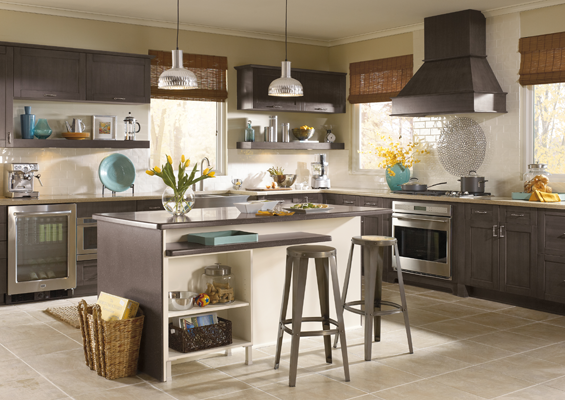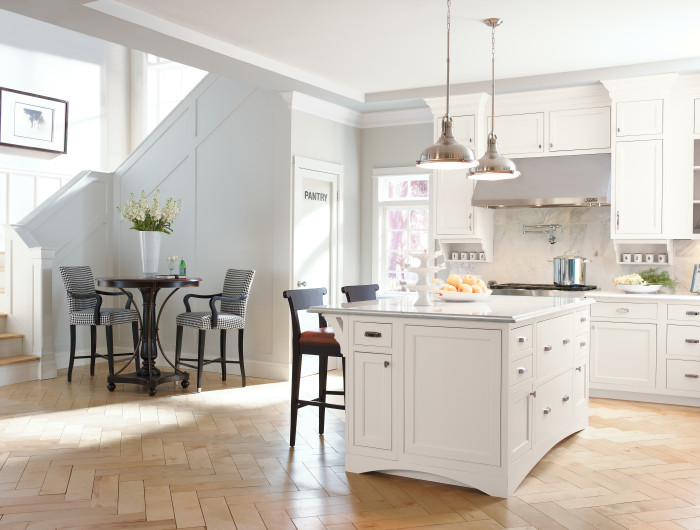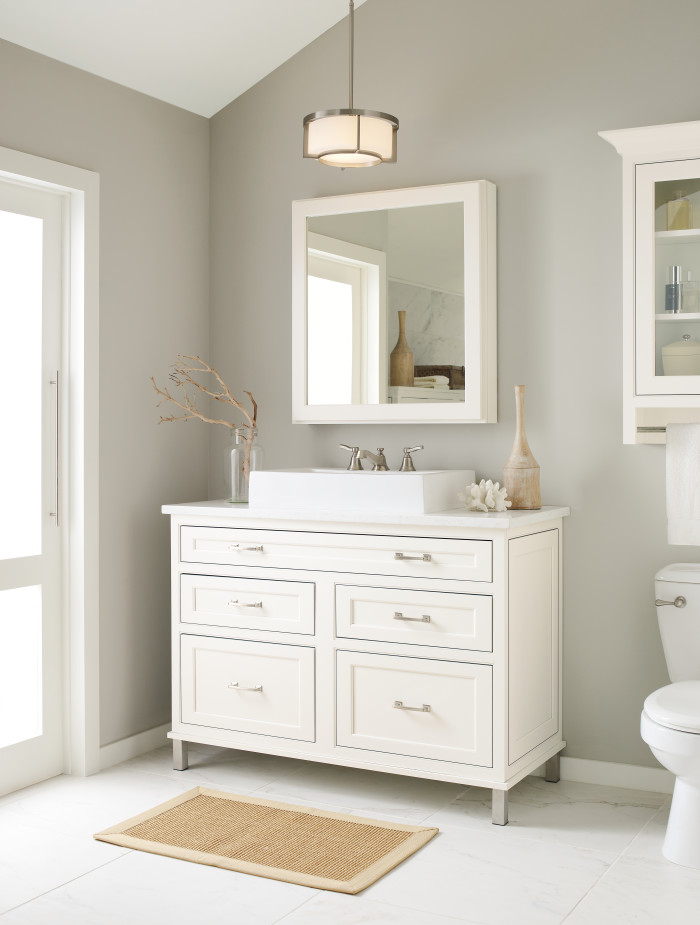
If you browse through the home design photos that are trending today, at least half of the spaces you’ll see probably fall into the transitional category. This style of interior design has wide appeal, because it doesn’t tip too far on the scale of traditional or modern, but instead strikes a nice balance between the two. Because it falls somewhere in the middle of two very distinct design styles, transitional design can sometimes be difficult to define.
So what makes a transitional style transitional? Let’s explore.
Transitional Style Defined
Transitional style is defined as a blend of traditional and contemporary styles, in the middle of old world traditional and chrome and glass contemporary. Other terms used to describe transitional style are “updated classic,” “classic with a contemporary twist,” and “new takes on old classics.” The style uses clean, simple lines that are not ornate like traditional styles, but that are also not as starkly basic as modern designs. Transitional styles usually incorporate a warm, neutral, or monochromatic color palette with pops of bold color used only in accents. Many transitional styles also find a balance between feminine and masculine to appeal to everyone in the home.
Transitional Kitchens
The quintessential transitional kitchen usually always includes Shaker style cabinets in a white or light finish, with a granite or quartz countertop that isn’t too busy, and a very simple backsplash…often consisting of subway tiles. There are many different variations on this look and there are no real “rules” when it comes to creating a transitional kitchen. Other elements usually seen in transitional style kitchens include simple accents, natural materials combined with manufactured ones, lots of texture, and a little bit of embellishment.
When it comes to design, a simple transitional kitchen layout often includes a kitchen island. Islands are great for prepping food or storing appliances, and can also be used for seating, where barstools or tall chairs can provide a dining space for guests or a nice spot for an after-school snack.
Additionally, transitional kitchens often allow ease of movement between the kitchen and any dining spaces or the kitchen and any outdoor seating. For example, by including sliding glass doors into your transitional kitchen/outdoor design, you can allow guests to easily go from the kitchen to a patio or deck area for outdoor dining.

Transitional Bathrooms
Transitional bathroom designs often include clean lines and a calm, comfortable style instead of using excessive ornamentation or overly bold flourishes. In other words, this is not your grandma’s bathroom! Transitional bathrooms tend to stick to the classics when it comes to color palettes, incorporating subdued hues like tan, beige, white, or light grey. These colors help pull together the contemporary and traditional styles of your vanity, flooring, or other fixtures and accessories.
Flooring and countertops in a transitional bathroom are often made of marble or natural stone, which works well by creating an understated but timeless look. When it comes to the vanity, midcentury modern cabinets or shaker style cabinets can be a great option, especially when paired with more traditional pieces like a natural wood bench or classic pedestal sink.

Transitional Living Spaces
If you are looking to add transitional style to a living room or den, here are a few elements that can be used. For furniture, look for pieces that combine curves with straight lines to create a balanced look between traditional and modern, and feminine and masculine. For fabrics, remember to keep the look simple and not fussy, so a solid color with texture would be a good choice as opposed to a busy pattern. For accessories, use potted plants, simple yet bold photo frames, trays of candle holders that have a pop of color, or metallic pieces that offset the simplicity of the design.
To get started with your transitional design today, please contact us for your complimentary in-home consultation.
